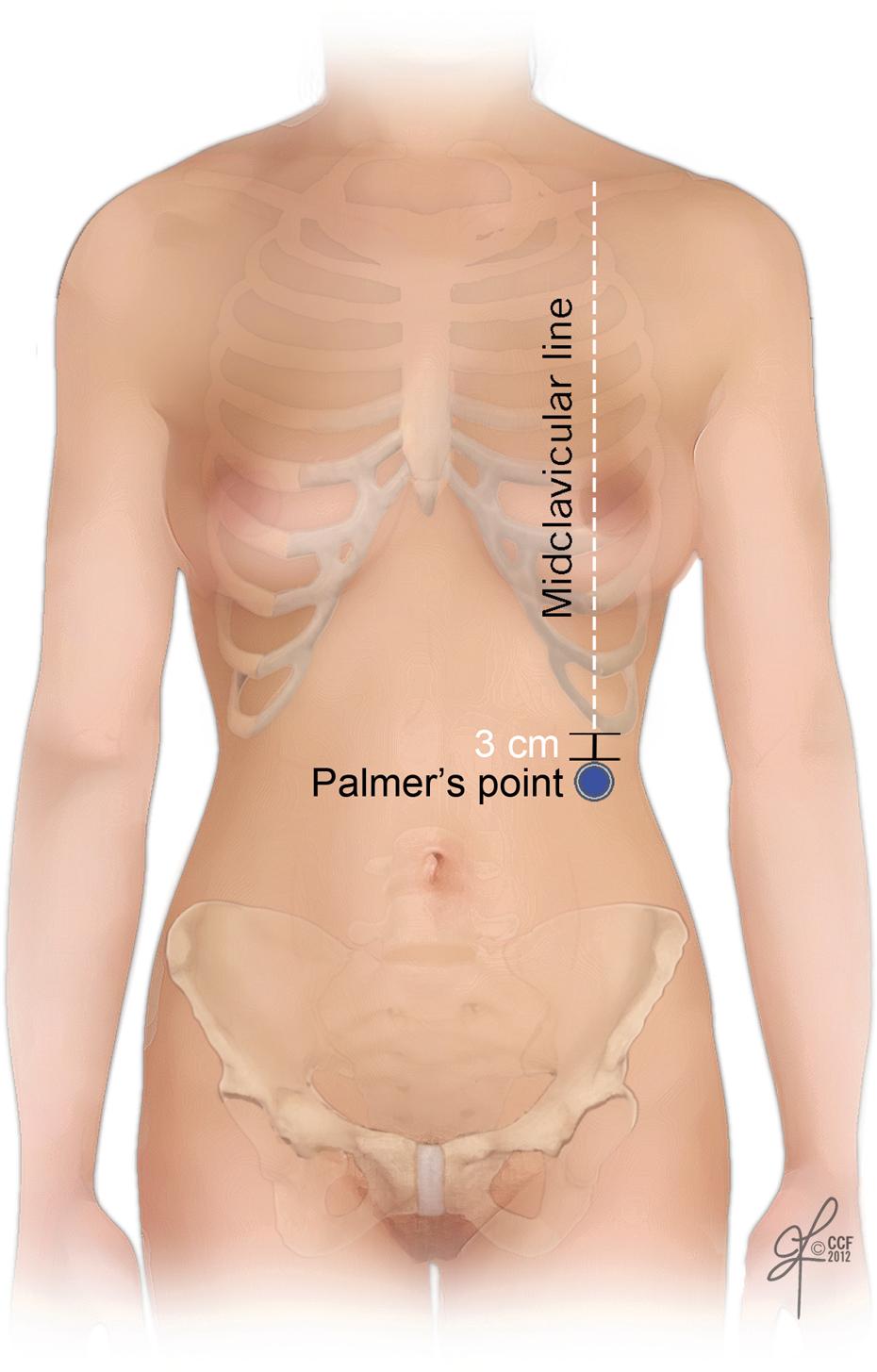Physical Address
304 North Cardinal St.
Dorchester Center, MA 02124
The most important prerequisite for proper trocar placement is knowledge of abdominal wall anatomy. Patient position is critical for a safe procedure. The patient is placed in the dorsal lithotomy position with foam-padded leg stirrups (Allen Medical Systems, Acton, Mass.), in which the calves and heels are supported and can be elevated for the vaginal portion of the surgery. The legs are checked for pressure points, and the arms are placed at the side, wrapped in sheets and with cushions placed at pressure points.
An examination is performed with the patient under anesthesia, and the bladder is catheterized. For operative laparoscopy, a Foley catheter is left in the bladder. A uterine manipulator is inserted. For infertility cases, we use a RUMI (Cooper Medical, Oklahoma City, Okla.) or a Cohen manipulator (Eder Instruments, Oak Creek, Wis.).
Effective insufflation of carbon dioxide (CO 2 ) gas into the peritoneal cavity creates a space between the anterior abdominal wall and the intraperitoneal organs that is paramount to perform any gynecologic laparoscopic procedure. To insufflate adequately, the peritoneal cavity needs to be accessed by the surgeon in a safe manner. The most common anatomic site to access the peritoneal cavity is through the abdomen. There are, however, other sites that have been described to achieve this, including the vaginal posterior cul-de-sac and a transfundal uterine approach.
In this chapter we summarize the most common techniques for abdominal entry at the umbilicus and at Palmer’s point located in the left upper quadrant.
We also review the general concepts of accessory trocar insertion.
The umbilicus is in general the preferred access point to the abdominal cavity for a variety of reasons: (1) the amount of tissue and planes that must be traversed from skin to peritoneal cavity is minimum at this point (skin and fusion of fascial layers; this area is free of subcutaneous adipose tissue); (2) the abdominal midline is devoid of significant blood vessels or nerves, which minimizes risk of superficial blood vessel or nerve injury; (3) the resulting positioning represents the ideal place for placement of the camera for most gynecologic cases, given its central location and distance to the pelvis (except for cases with a large pelvic mass or uterus); and (4) it provides adequate postoperative cosmetic results.
The primary trocar or Veress needle should be placed cautiously in the umbilicus as the average distance between the umbilicus and the aortic bifurcation (in supine position) is: 0.1 ± 1.2 cm for nonoverweight, 0.7 ± 1.5 cm for overweight, and 1.2 ± 1.5 cm for obese patients.
Palmer’s point is located 3 cm below the left costal margin at the left midclavicular line ( Fig. 112.1 ). This point has been successfully used as an alternative site for primary trocar insertion in cases where an umbilical entry is not recommended (see later). There are only a few contraindications to the use of this location as a primary site; these include known hepatomegaly or splenomegaly, which would make this approach riskier.

The primary trocar at Palmer’s point should be placed only after stomach decompression, as this is the closest organ to this site. The next closest organ is the left lobe of the liver. Because the distance between this point and the aorta is 11.3 ± .02 cm perpendicularly to the skin and 16.6 ± .02 cm at a 45-degree angle (caudally), the primary trocar or Veress needle should be placed in a 45-degree angle (caudally) when Palmer’s point is used.
Other sites that can be used for access of the peritoneal cavity include the ninth or tenth left intercostal spaces, hypogastrium, vaginal posterior cul-de-sac, and uterus (through the fundus). These techniques can be performed when insufflation has failed at other sites. Nonetheless, these are rarely required when the umbilicus and Palmer’s points of access are properly chosen and executed.
The umbilicus is the preferred access point to the abdominal cavity. Circumstances in which Palmer’s point should be strongly considered as the primary anatomic site for access include patients with the following:
Vertical laparotomy incision(s).
Umbilical hernia (or history of repair of an umbilical hernia, especially with synthetic mesh or wound dehiscence at this level).
Known periumbilical adhesions (at prior laparoscopy or laparotomy, even if lysis of adhesions was performed at that time).
Suspicion for severe pelvic-abdominal adhesions (e.g., history of ruptured appendicitis, pelvic inflammatory disease, or stage III/IV endometriosis).
History of multiple abdominal surgeries.
History of rectus abdominis myocutaneous flap (e.g., when used for breast reconstruction).
Laparoscopy during pregnancy (when gravid uterus is at or past the level of the umbilicus).
Laparoscopy in morbidly obese patients.
After failed attempts for insufflation at the umbilicus.
An abdominal ultrasound performed at the level of the umbilicus can be helpful in identifying the presence of adherent bowel in the periumbilical area before trocar placement. Several techniques have been reported such as the “visceral slide test” or periumbilical ultrasound-guided saline infusion.
It is important to consider that adhesions may be located cephalad to an existing vertical skin incision. Our practice is to use Palmer’s point to access the abdomen of patients with a prior vertical incision (especially if the edge of the skin incision is < 2 cm from the umbilicus).
Become a Clinical Tree membership for Full access and enjoy Unlimited articles
If you are a member. Log in here